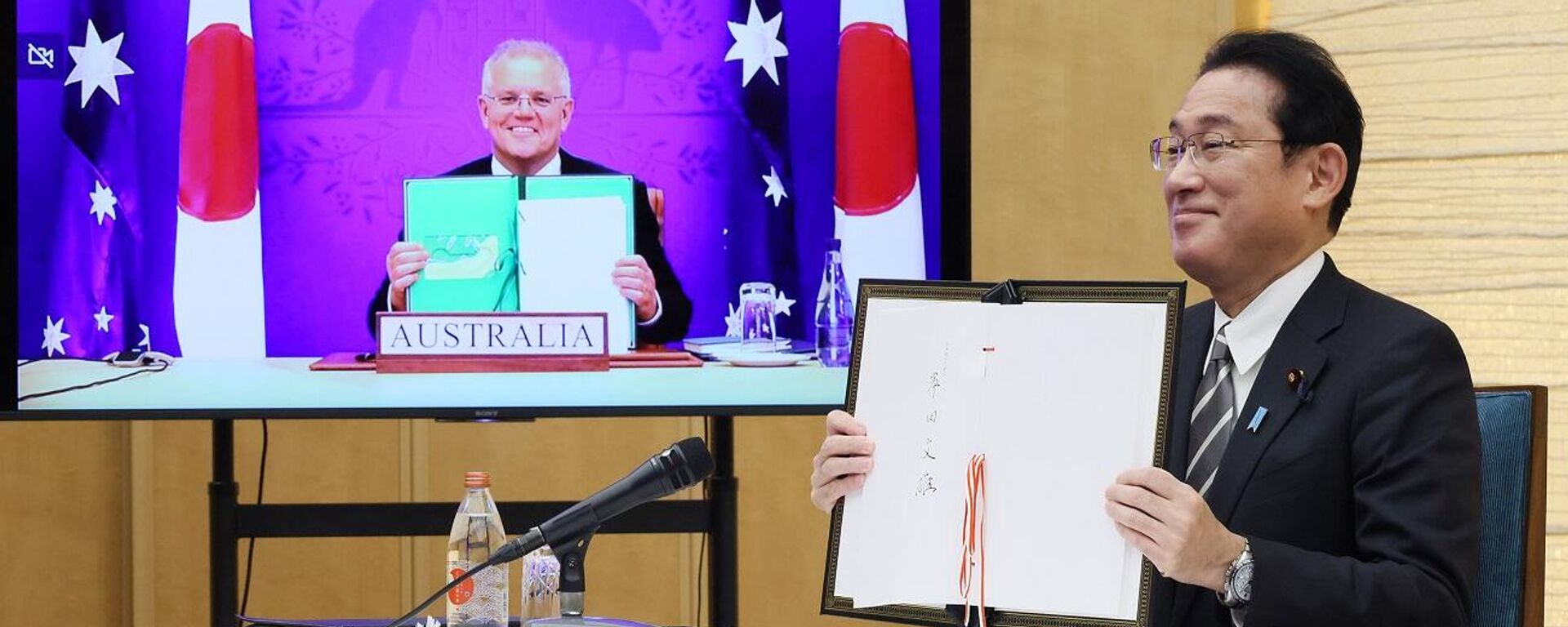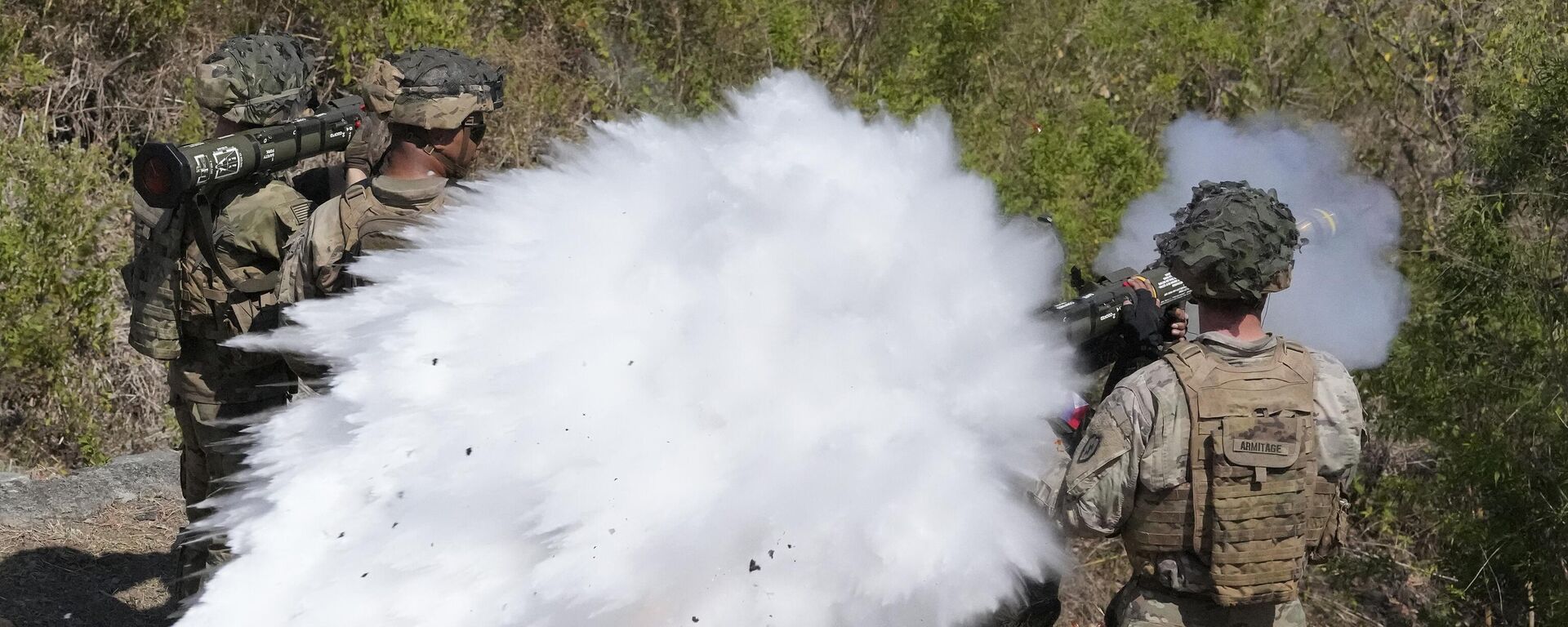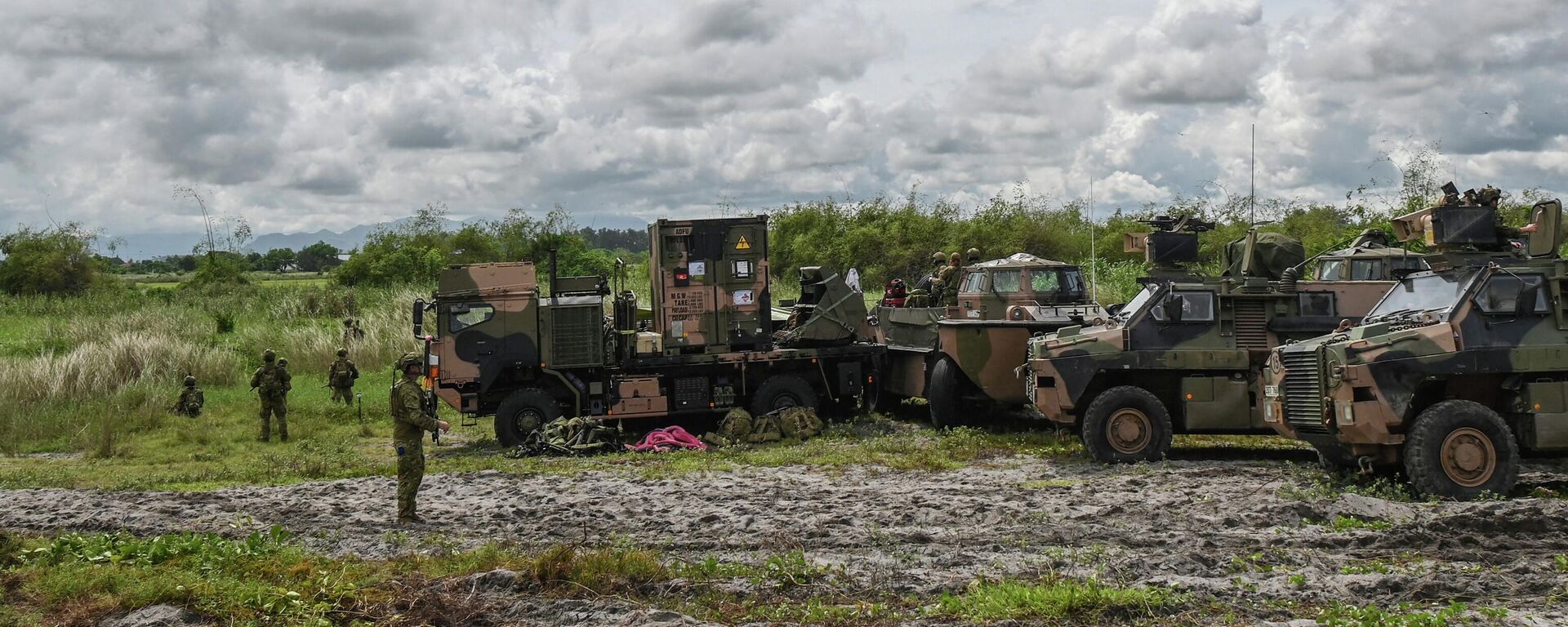Why Australia-Philippines Deal is Part of Broader US Effort to Encircle China
18:39 GMT 08.09.2023 (Updated: 09:02 GMT 10.09.2023)
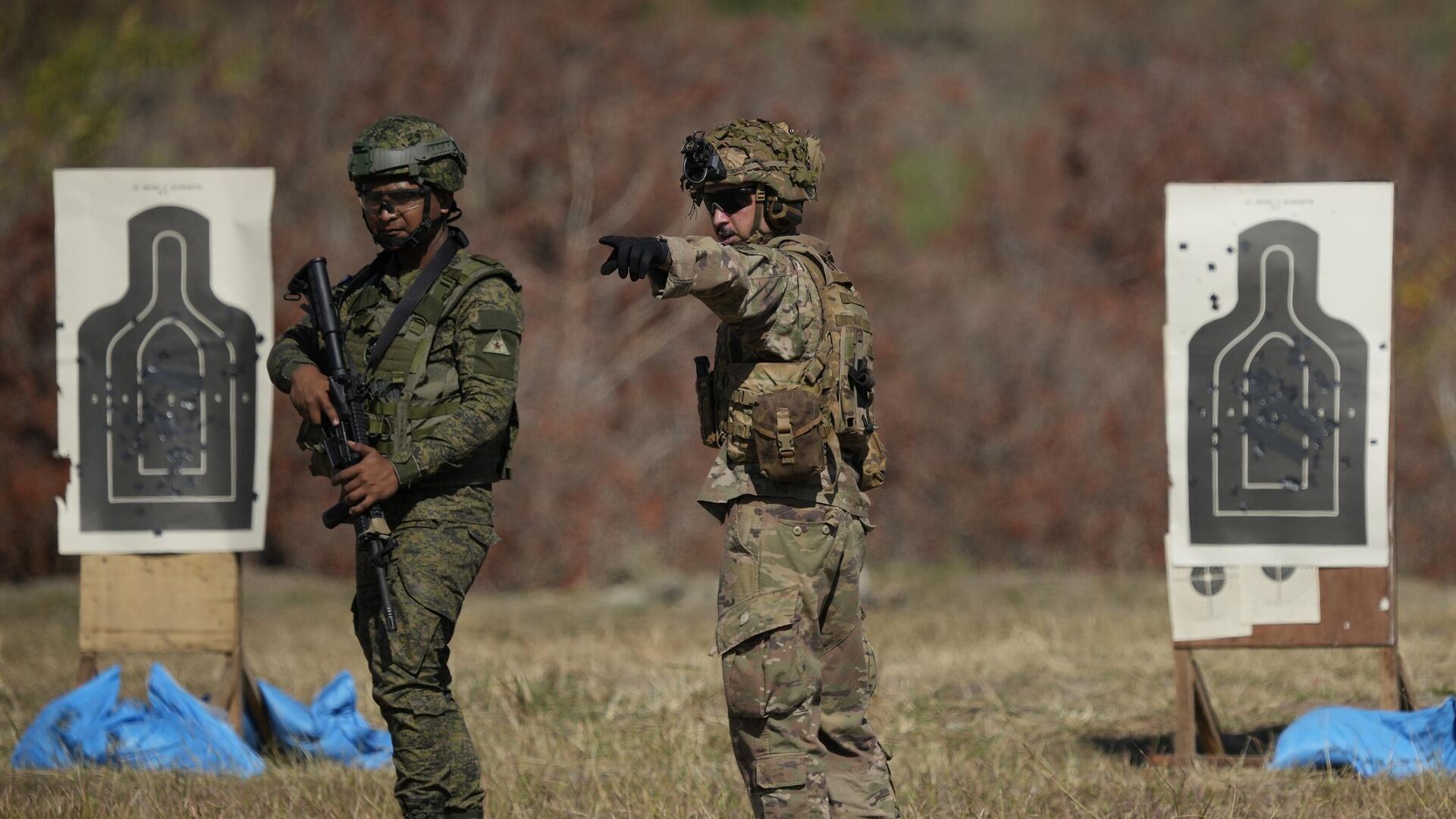
© AP Photo / Aaron Favila
Subscribe
The two countries strengthened their military and economic ties by inking a strategic partnership deal on Friday. What message does the new pact send to China?
Australian Prime Minister Anthony Albanese's Friday's trip to Manila became the first visit by an Australian premier to the Philippines in 20 years.
During the historic visit, Albanese and Filipino President Ferdinand Marcos upgraded the nations' relations to a strategic partnership and agreed to start joint naval patrols in the contested South China Sea to challenge Beijing's influence in the region.
"Strengthening military-to-military relations [is] one priority during Albanese's visit," Dr. Jagannath Panda, the head of the Stockholm Center for South Asian and Indo-Pacific Affairs at the Institute for Security and Development Policy in Sweden, told Sputnik.
"In fact, Australia would like to see how more ASEAN countries should support the Indo-Pacific narrative that shares commonality with Australia in strengthening a rules-based order, and the Philippines is a priority country to this effect in Australian strategic thinking."
In fact, Australia is representing not only its military interests but also those of its AUKUS allies – the US and the UK – and even more so the interests of Washington, according to Jeff J. Brown, author of The China Trilogy, editor at China Rising Radio Sinoland and co-founder and curator of the Bioweapon Truth Commission.
"We have to remember that Australia has been a loyal Asian centurion for the Anglo-Saxon empire going back to the 19th century: there in India, Africa, WWI, WWII, Korea, Vietnam, Iraq, Afghanistan, the South China Sea," Brown told Sputnik. "Thus, Prime Minister Albanese going to Manila is like Biden going there. He will have his Potomac marching orders to push the Philippines as far away as possible from China, create division and tension."
Under Marcos, Manila's relations with Beijing have become strained. Unlike his predecessor Rodrigo Duterte, who maintained good working relations with the People's Republic of China (PRC), Marcos shifted to be more closely aligned with the West.
Now, the Philippines has become even more vocal in the maritime dispute over the South China Sea, which parts are also claimed by China and several other countries.
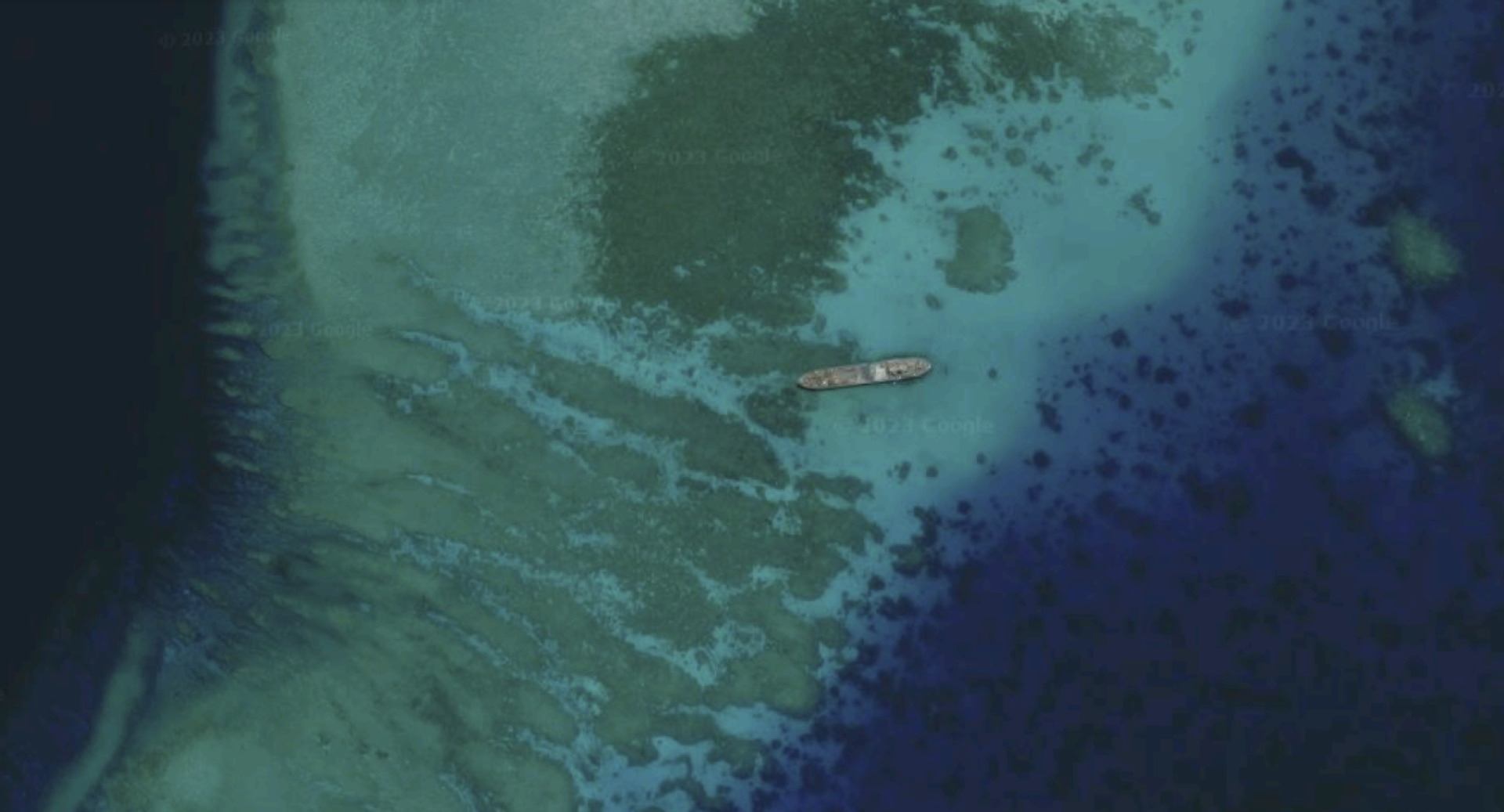
The Philippine transport ship RMS Sierra Madre deliberately grounded on Second Thomas Shoal in the South China Sea
© Google Earth
During the meeting in Manila, Albanese emphasized Canberra's recognition of the 2016 South China Sea Arbitration that invalidated China's territorial claims in the sea on historical grounds. Beijing does not recognize the arbitration.
Still, the scope of Australia-Philippines military cooperation might be broader than joint patrols in the contested waters, per Brown.
"Any cooperation with Australia and any other country, the Philippines included, is cooperation with Uncle Sam by proxy," the scholar suggested. "Since the Philippines’ nominal 'independence' in 1946 (originally celebrated on July 4, just like the US!), it too has been a loyal American vassal, the only exception being the previous president, Rodrigo Duterte."
"He strongly reoriented Filipino foreign policy, commerce and defense towards Beijing and ASEAN, while slowing down the US’s heavy military footprint there. But even Duterte could only do so much with the Philippines’ military. It is a loyal servant to the Pentagon and derives much of its power in-country from this long-standing relationship. Therefore, any Australian military input will simply be a runt proxy of the United States," Brown believes.
Australian-Filipino Pact is Part of Broader Web of Alliances
It's not the only security agreement struck by Canberra this year. In January, Australia concluded a military cooperation deal with yet another regional player, Japan: the Japan-Australia Reciprocal Access Agreement (RAA) came into force last month.
International experts interviewed by Sputnik at the time explained that the pact should be seen within the framework of many other treaties and agreements increasingly struck by the US, the UK, and Australia (which, together form the AUKUS pact) with regional players.
These also include the Quadrilateral Security Dialogue, or the Quad, which was formed between Australia, India, Japan and the US as well as the evolving tripartite format of coordination between Washington, Seoul and Tokyo. All these pacts and alliances are intertwined and aimed at deterring China, North Korea and Russia in the region, as Igor Istomin, lead research fellow at the Center for Advanced American Studies, MGIMO University, told Sputnik in mid-August.
"The security architecture in the Indo-Pacific is witnessing interesting developments: new modes of trilateral, minilateral, or quadrilateral formulations are emerging," Dr. Panda said. "In these formulations, Australia's new foreign policy is looking at the ASEAN countries more intently than before: strengthening bilateral relations is becoming the focus for Australia. The Philippines is one of those key countries from ASEAN for Australia."
"Given Australia and the Philippines as maritime nations, Albanese's visit might allow Australia to share concerns and discuss in length issues from freedom of navigation to free passage and cooperation in areas such as the blue economy. The Philippines' long-standing concern about China in the South China Sea will undoubtedly be discussed when Australia is building military confidence through an AUKUS-like pact with the US and UK," Panda suggested.
How US is Beefing Up Military Presence in the Philippines
Meanwhile, Washington is steadily increasing its military role in the Philippines. In February, the Marcos administration granted the US military access to four additional Philippine military bases in addition to the five existing sites under the 2014 Enhanced Defense Cooperation Agreement between Manila and Washington.
Some of these sites are located across the sea from Taiwan, which is regarded by Beijing as its inalienable territory and which has been increasingly armed by the Biden administration. Washington claims that the reason for the speeded-up militarization of the island is China's alleged intent to "invade" it, something that has been vehemently denied by Beijing.
What's more, the Western press broke on August 30 that the US military is in talks to develop a port in the Filipino remote northwestern Batanes islands. The move could boost American access to strategically located islands facing Taiwan: the Batanes are located less than 200 km (125 miles) from it.
Per the press, the US military installation there would give Washington some control over the Bashi Channel which runs between those Filipino islands and Taiwan. The channel is considered a choke point for Chinese vessels moving between the Western Pacific and the South China Sea. In case of a military standoff with China over Taiwan it would be a key waterway, says the Western media.
It appears that Washington is setting up a stage for a wide conflict in the region both through its new military bases and a web of security alliances and pacts.
"No surprise that Uncle Sam is pulling every string here, from the deeply unpopular AUKUS in Asia, the floundering 'Indo-Pacific' Quad, militarizing Japan, harassment in the South China Sea, to constantly threatening DPRK with military exercises – all of this is to ring-fence China and create tension for Russia on its eastern flank," Brown concluded.

